Childhood Incontinence (Courtesy Indian Association of Paediatric Surgeons)
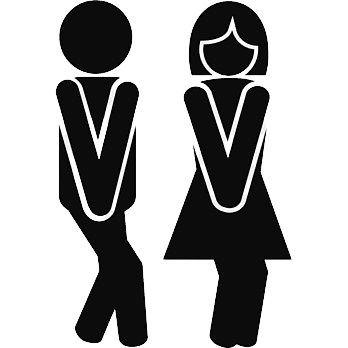
Paediatric Surgery Week June 5th to 11th 2023
To understand incontinence, we must first understand what is normal continence for a child. Continence is: Ability to control urine and motions
♦ To hold when circumstances are not conducive
♦ To void when circumstances are conducive
A child usually gains:
♦ Continence for stool by 1 ½ years of age
♦ Continence for urine by 2-2 ½ years of age
If a child has incontinence to either urine or stool beyond the normal age, it can start affecting the child psychologically. As this age forms the basis of psychological development of a child, it is very important to address the issue early.
Following are the challenges for an incontinent child
♦ Maintaining personal hygiene
♦ Soiling of clothes and undergarments
♦ Bad odour in social situations
♦ Deterioration of kidney function over time and kidney failure
♦ Social stigma (other parents keeping their child away)
♦ Unable to make friends at school (teasing by peers)
♦ Limitation to physical activities, sports, swimming etc.
♦ Psychological trauma and developmental/behavoiural problems in later life
What accounts as Urinary Incontinence?
♦ When a child is unable to hold urine for about 2 hours at a stretch
♦ Constant leaking of urine, frequent trips to the toilet
♦ Soiling of clothes and undergarments
♦ Soiling of bed during day or night sleep
♦ Repeated urinary infections in some cases
What causes Urinary Incontinence?
♦ Spinal problems such a neural tube defects
♦ Congenital/developmental defects of lower urinary tract
♦ Poor habit forming and toilet training
Evaluation of Urinary Incontinence requires that your child is seen by a paediatric surgeon. A paediatric surgeon will do the following things:
♦ Take detailed history of the child. A detailed and accurate history by the parents goes a long way in understanding and finding out the cause for the incontinence
♦ A voiding diary detailing the micturition pattern of your child is very important. It gives a vast amount of information regarding voiding habits in relation to different times and situations in a day
♦ A detailed physical examination will help diagnose or rule out any physical anomaly which can be corrected
♦ Urine tests, blood tests and some other investigations might be required to come to final diagnosis
Managing Urinary Incontinence:
In most cases, non-invasive and non-pharmacological treatment methods can lead to improvement of child’s symptoms, if there is no anatomical or congenital anomaly. It requires
♦ Educating child and family regarding importance of maintaining strict bowel and bladder habits
♦ Dedicated bladder and bowel training started at the correct age
♦ Good dietary and fluid intake habits
In some cases, some children might require medications to help with the incontinence, especially bed-wetting
Those children who have an anomaly warranting surgical correction, will need surgery to make them continent. This might be in the form of a continent channel for clean intermittent catheterisation (CIC).
What is Stool Incontinence?
♦ Child unable to hold stools, passes it without control and knowledge
♦ Usually a child must pass normal, soft stools once or twice a day, but certainly before 48 hours
♦ Inability to empty bowels normally leads to constipation, and this too if left unattended can lead to leakage.
What causes of faecal incontinence?
♦ Usually along with urinary leakage in children with spine defects Congenital/developmental defects in anal tracts
♦ Poor habit forming, habitual constipation and overflow
Management of faecal Incontinence
♦ A detailed history of the dietary habits of the child is vital. Most of the times it is the faulty dietary habits which is the culprit
♦ Keeping a stooling diary is very vital. It helps in determining the pattern of stool passage of the child during the day
♦ Detailed physical examination is required to rule out any physical or congenital anomaly
♦ Investigations and special tests may be required if anything abnormal is detected on the physical examination
♦ Counselling and education of child and family regarding proper dietary habits and toilet training is essential
♦ If any physical anomaly is found, surgical correction is required
♦ Sometimes, medications like stool bulking agents may help in relieving constipation
♦ In spinal anomalies, a continent channel may need to be provided to improve social continence
In recent times, such advanced treatment modalities have become available, that EVERY CHILD WITH INCONTINENCE CAN BE HELPED TO LEAD A SOCIALLY ACCEPTABLE AND PRODUCTIVE ADULT LIFE IN FUTURE.
Latest Blogs
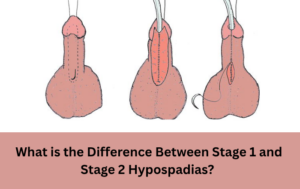
What is the Difference Between Stage 1 and Stage 2 Hypospadias?
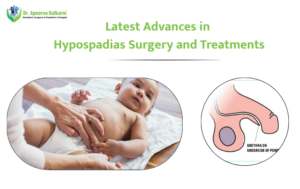
Latest Advances in Hypospadias Surgery and Treatments

Kidney Stones in Children: Effective Treatment and Prevention Tips
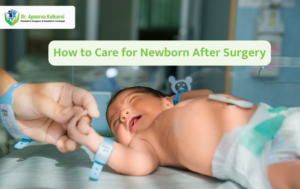
How to Care for a Baby After Neonatal Surgery: A Guide for Parents
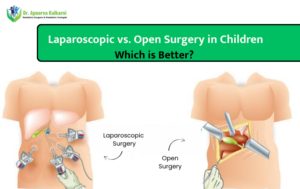
Laparoscopic vs. Open Surgery in Children: Which is Better?

